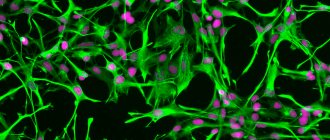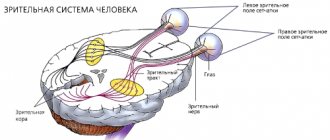Stuttering in children
It is necessary to correct stuttering with frequent sessions with a specialized specialist - a speech therapist. The work is aimed at:
- freeing the baby’s speech from excessive tension;
- elimination of incorrect pronunciation;
- formation of clear articulation, correct and expressive speech.
Speech therapy work is the basic method of therapy around which other methods of correction are built. First, classes are conducted in private with a speech therapist, who teaches the child various techniques for correct pronunciation of individual words, phrases and sounds. Then the exercises go on their own. All acquired skills are reinforced in everyday life, i.e. in communication with parents and peers.
There are several important rules for children who stutter when conducting classes:
- Planning your statement. At the very beginning of work, it is better to avoid improvisations in speech, so as not to provoke speech spasms. When a child knows what he wants to say, he becomes more relaxed and emotional tension goes away.
- Breath. Each pronunciation of a word should occur while exhaling.
- Pauses in speech. A short stop allows you to gain some air while the stutterer can think about what he wants to say next. Pauses can also be used within long sentences.
The correction is carried out by a specialist with sufficient experience. The speech therapist must take into account the individual characteristics of the child, including his age. For preschoolers, exercises should be formulated in a playful way so that they are interesting to children - this way the specialist’s contact with the child is better formed. It is important to clearly plan your classes, trying not to make them long - 20 minutes is enough.
Drug treatment is prescribed by a neurologist if the baby has neurological problems. Among the drugs most often prescribed are muscle relaxants (to relieve muscle spasms) and nootropics that improve cerebral circulation.
It is important to give the child stability so that he feels calm in his environment. You need to play with your baby more often, show him his importance in every possible way, and protect him from all kinds of stress. Only a calm atmosphere will help him cope with this problem.
If you are wondering how to counsel children with stuttering and how to determine the clinical form of stuttering, the severity of stuttering, the location and form of seizures. If you also want to avoid mistakes when correcting stuttering, we are waiting for you at the practical intensive “Stuttering: symptoms, modern methods of correction”!
You will learn:
1. differentiate between iterations and true stuttering;
2. apply massage techniques for stuttering by L.N. Meshcherskaya. and Arkhipova E.F.
3. write a psychological and pedagogical conclusion correctly;
4. recommend the use of a reminder and rules of speech for stuttering and hydrotherapy sessions at home.
Would you like more information about the intensive? Click here!
Stuttering - symptoms and treatment
At what age is it best to start treatment in children?
Treatment for stuttering should begin immediately after diagnosis.
Treatment of stuttering, as a rule, is complex, staged and quite long. Several specialists must participate in it.
A neurologist or psychoneurologist is a doctor with a higher medical education as a neurologist who has completed courses in psychiatry. He prescribes appropriate drug therapy based on the state of the nervous system and monitors the dynamics of the development of symptoms of the disease.
A psychotherapist is a specialist with a higher medical education who deals with therapeutic effects on the human psyche. He uses different types of psychotherapy, including direct talking, hypnosis and a number of other stuttering treatment techniques:
- Subpersonal analysis . This approach considers elements of behavior as internal images that are perceived by the human consciousness as parts separate from the personality itself. A person’s subpersonalities are tied to his family, social, professional roles (for example, the role of a parent, daughter/son, boss, colleague, etc.). Using this technique, a psychotherapist tries to reveal the traits and manifestations of a stutterer’s subpersonalities when he conducts his internal dialogue, and tries to change pathological behavioral traits, neutralizing stuttering.
- NLP (neurolinguistic programming) is a series of psychological techniques that make it possible to influence the subconscious of a stutterer, changing his thinking and behavior through the introduction of special linguistic programs (attitudes) into his consciousness.
- Working with toys as breathing exercises. For training, soap bubbles, spinning toys, etc. are used. In this case, the child is asked to blow through a straw, blowing bubbles into the water, blow on dandelions and boats in the water, inflate balloons, etc.
- Autotraining is a self-hypnosis technique through which you can change character traits and bad habits.
An acupuncturist is a specialist with a higher medical education as a neurologist or neurologist who has undergone special training in acupuncture. It affects special points and nerve endings, relieving nervous tension.
A psychologist conducts testing, helps to establish the cause of a speech defect and deal with a person’s internal problems, identifying the weaknesses of his character. To do this, he uses verbal methods of influence.
A speech therapist teaches a person who stutters to breathe correctly during speech, use his voice, articulate easily, and speak smoothly and rhythmically [18][19][20][21].
The physical therapy instructor develops health-improving activities, which include hardening procedures, therapeutic massage and physical education. This strengthens the human immune system and allows one to “dump off negative accumulated energy” through increased muscle activity [13][16].
Although each specialist makes an important and invaluable contribution to the treatment of stuttering, none of them can eliminate it completely on their own.
Eliminating stuttering in preschoolers
In children, stuttering goes away on its own, even without treatment. In this case, you should reduce the load on the baby’s speech apparatus, and also from time to time visit specialists who will monitor the development of speech dynamics.
Eliminating stuttering in adolescents and adults
The older a child gets, the less chance there is of completely eliminating his stuttering. In adolescence, stuttering is difficult to correct. The main goal of treatment is to teach relaxation skills and the ability to maintain a positive attitude, maintain constant confidence in yourself and your abilities, and use techniques to increase self-esteem.
An adult has often already adapted to his own speech characteristics or learned to control them. The main goal of stuttering treatment is to reduce stress, as stress can make stuttering worse.
New techniques for treating stuttering
Examples of devices and computer programs for stuttering treatment:
- SpeechEasy - worn in one ear and looks like a hearing aid. Changes the sounds passing through the device so that the patient hears his voice with a slight time delay and in a different key. As a result, stuttering sharply decreases or disappears.
- AKR-01 “Monologue” - also reproduces speech with a delay, creating an echo effect.
- BreathMaker and Cafet are computer training programs for stuttering treatment.
Treatment of stuttering (logoneurosis)
Stuttering (logoneurosis)
Reviews about the treatment of logoneurosis at the Medical-Psychological Center for Individuality
For treatment in Moscow
Logoneurosis
– the most common
type of stuttering
.
In most cases, it occurs between the ages of 3 and 5 years and is associated with a traumatic situation
.
Later, throughout life, in the absence of competent treatment, logoneurosis proceeds in different ways, most often in waves, sometimes intensifying, sometimes weakening. It is very difficult for a person who has not encountered this disease in loved ones or has not experienced it himself to understand the full painful severity of this disorder. The most painful
and
painful things
in logoneurosis are not fear, resentment, annoyance or confusion from
unsuccessful oral speech
and the negative reaction of others.
Over time, one partially gets used to this and develops a kind of protective anesthesia, like any other constant physical or mental pain. The most acute and depressing feeling is the inability to realize one's abilities
.
Exactly what you want most in life turns out to be unattainable. Oral speech is the main means of social communication, and to successfully implement one’s life plans, it is almost impossible to do without normal oral speech. And logoneurotic hesitations, sometimes reaching the point of complete inability to continue speaking, appear precisely when a person really, really needs clear oral speech. And, as if mocking a person, logoneurotic hesitations disappear in situations where the significance of his speech is negligible. It’s impossible to explain this to others, they don’t understand. At best, they begin to feel sorry or give advice, which only intensifies irritation and increases mental confusion from the awareness of the uncontrollability of their behavior. Despair, hopelessness, bitterness, resentment, anger and other acute negative feelings hit a person mercilessly and beyond measure. And unsuccessful attempts to treat logoneurosis only aggravate the situation and reduce one’s own self-esteem. With invisible shackles, logoneurosis forces a talented and responsible person to occupy a narrow and cramped social niche for him, forces him to abandon his goals and, with the sword of Damocles, limits all his direct social contacts. “Now, for the first time in more than 15 years, I feel pleasure from my speech and from communicating with people.
And this is an amazing feeling that opened up completely previously inaccessible opportunities for me. Neurosis has generally disappeared from my life, and now I almost always feel calm and confident. Sometimes I simply don’t recognize the new me, remembering the old me.” More details Logoneurosis occupies a special place among other speech disorders. It has long been noted that logoneurosis
occurs in especially
talented
and
gifted
people (other speech disorders, including residual organic stuttering, are much less common among them).
A small part of these people, experiencing great difficulties in social adaptation, still managed to “declare” their abilities in science, politics and art. Demosthenes, Virgil, Napoleon, Moliere, Dickens, Bismarck, Churchill, Newton, Darwin... The list of these big names goes on and on. Logoneurosis is a sign of high intellectual
abilities.
This is evidenced by its high prevalence in developed countries, especially in their densely populated megacities. In non-urbanized countries or regions (even if they have a large population) logoneurosis is rare. Logoneurosis predominantly occurs in people engaged in intellectual work
, and is especially characteristic of people with
a high level of
abstract
thinking
. According to various sources, an average of 2.5% of the population suffers from logoneurosis. The ratio of men and women is approximately 4 to 1. Manifestations of logoneurosis are especially strong and exert their destructive influence in young and middle age, precisely when a person needs to realize his creative and scientific potential, solve professional, social and personal issues of his life. And it is very important that the implementation of these most important tasks is not blocked by the stone grip of logoneurosis.
“ I wanted to say that he helped me get rid of my fear before speaking.
I lost the thought that “now I need to say exactly, without hesitation.” The very feeling that speech is a problem and brings inconvenience has disappeared! I am very glad that these feelings have disappeared!
«
Read more
MBST (Method of balance of force and precision) offers a way to eliminate
logoneurosis, based on a deep understanding of the foundations of human movement in general and speech movement in particular. The basics of neuromotor speech movements can be easily understood using numerous everyday examples from the phenomena and events around us. The world is full of simple, direct and understandable analogies. Knowing the essence, it is easy to understand the mechanism of painful speech disorder. Only based on this knowledge can we begin to eliminate logoneurosis. The neuromotor mechanisms of oral speech are restored, and not formed anew, so speech has previously lost balance. Essentially, re-gaining balanced oral language requires the restoration of only a small number of skills and knowledge of their role and place in the structure of speech. A person regains the ability to speak without hesitation in any situation, under any psychogenic load, just as he speaks alone with himself, voicing his thoughts out loud. And a deep understanding of the essence of the mechanism for correcting speech gives an unshakable conviction in the irreversibility of the newly acquired ability for balanced oral speech.
We invite you to a consultation with a specialist
our
Center
.
Cost of consultation – 6000 rub. /at one o'clock.
What does the consultation cost include:
- Individual approach to your problem.
- An appointment time convenient for you.
- Maintaining confidentiality.
- Comfortable conditions for consultation.
- The specialist's work experience has been since 1983.
- If necessary, provide supporting documents (certificates, opinions)
What you will receive during the consultation:
- An objective assessment of your condition by an experienced specialist.
- A clear action plan and number of sessions.
- Selection of psychotherapeutic techniques, including original techniques
. - Individual recommendations from a specialist
.
In our Center
you are in good hands!
We will be happy to take care of your health!
Causes of speech impediment
The causes of stuttering are usually divided into two large categories: producing causes and predisposing causes. The first type is random, impetus events and actions. The second type is the conditions that give rise to the occurrence of the disease.
Producing causes
Anatomical and physiological
- Brain injuries
- Organic brain disorders
- Exhaustion of the nervous system
- Intoxication
- Somatic chronic diseases
- Diseases of the nose, pharynx, larynx
- Speech delays
Mental and social
- Psychotrauma (short-term and long-term)
- Improper upbringing in the family
- Improper speech formation in childhood (speech while inhaling, rapid speaking)
- Overload of speech material
- Polyglossia
- Imitation of stutterers
- Retraining left-handedness
Predisposing causes of stuttering and unfavorable factors
Under certain conditions, the risk of developing stuttering increases. The likelihood of speech defects increases in the following cases:
- Neurotic burden of parents : nervous, infectious diseases of parents (for example, syphilis, alcoholism, drug addiction, intoxicating the nervous system of the fetus)
- Neurotic characteristics of the child : increased irritability, fears (for example, night terrors in children, urinary incontinence, increased irritability, emotional tension, all kinds of twitching in the muscles)
- Constitutional predisposition : state of v.n.d., susceptibility to autonomic function
- Hereditary burden : diseases transmitted from parents (for example, weakness of the speech apparatus is inherited)
- Brain damage : post-infectious, organic, traumatic brain injuries (eg, concussions, encephalopathy)
unfavorable conditions can also leave their mark :
- physical weakness of children;
- hidden mental impairment of the child;
- lack of positive emotional contacts with a loved one;
- insufficient development of articulatory motor skills, sense of rhythm and facial-articulatory movements
If a child belongs to one of the listed risk groups, then you should carefully monitor his behavior and speech. It is also worth remembering that boys stutter 4 times more often, and more than half of those who stutter acquire the disease between 2 and 5 years, 90% get sick before 10 years.










